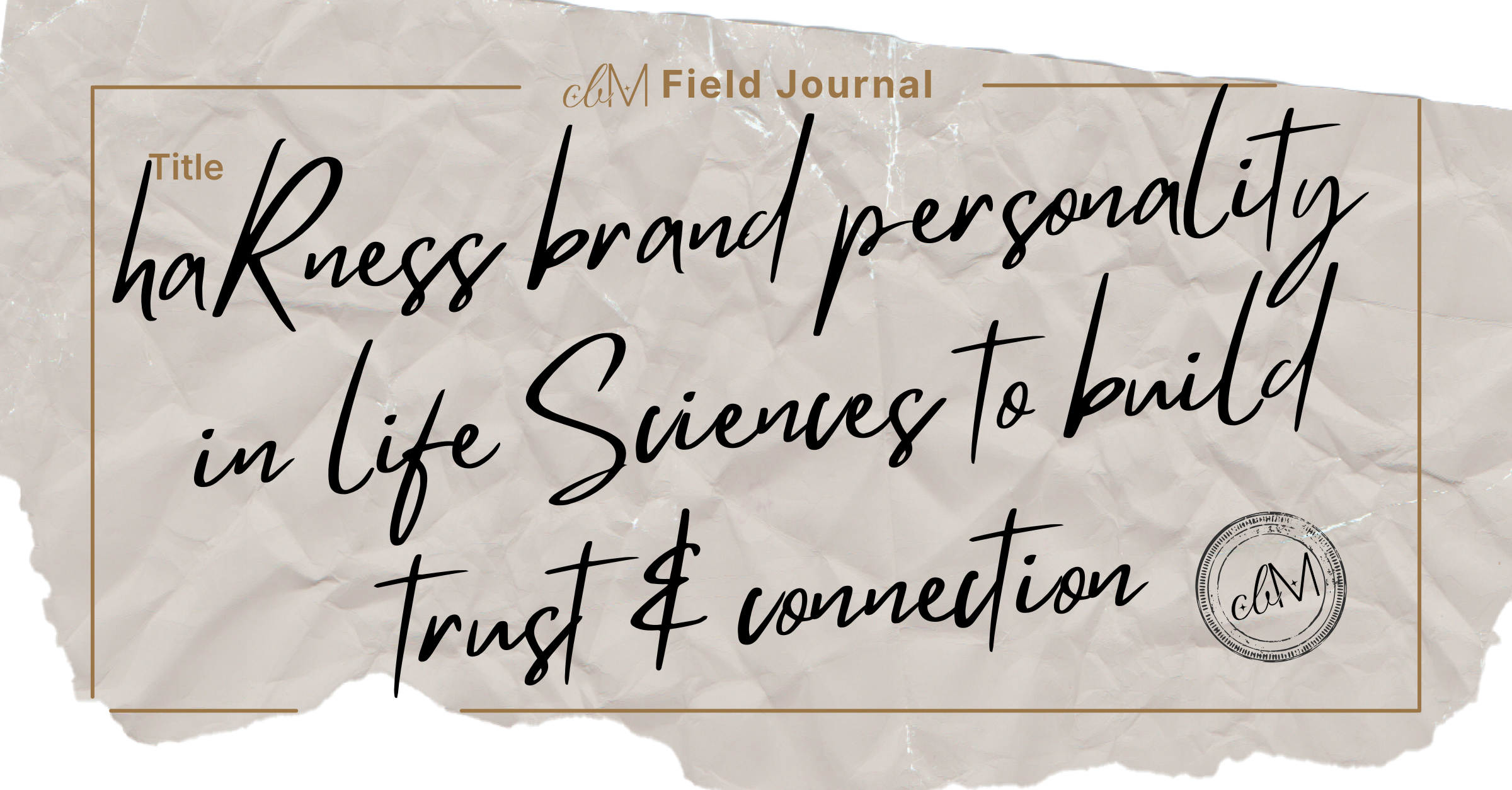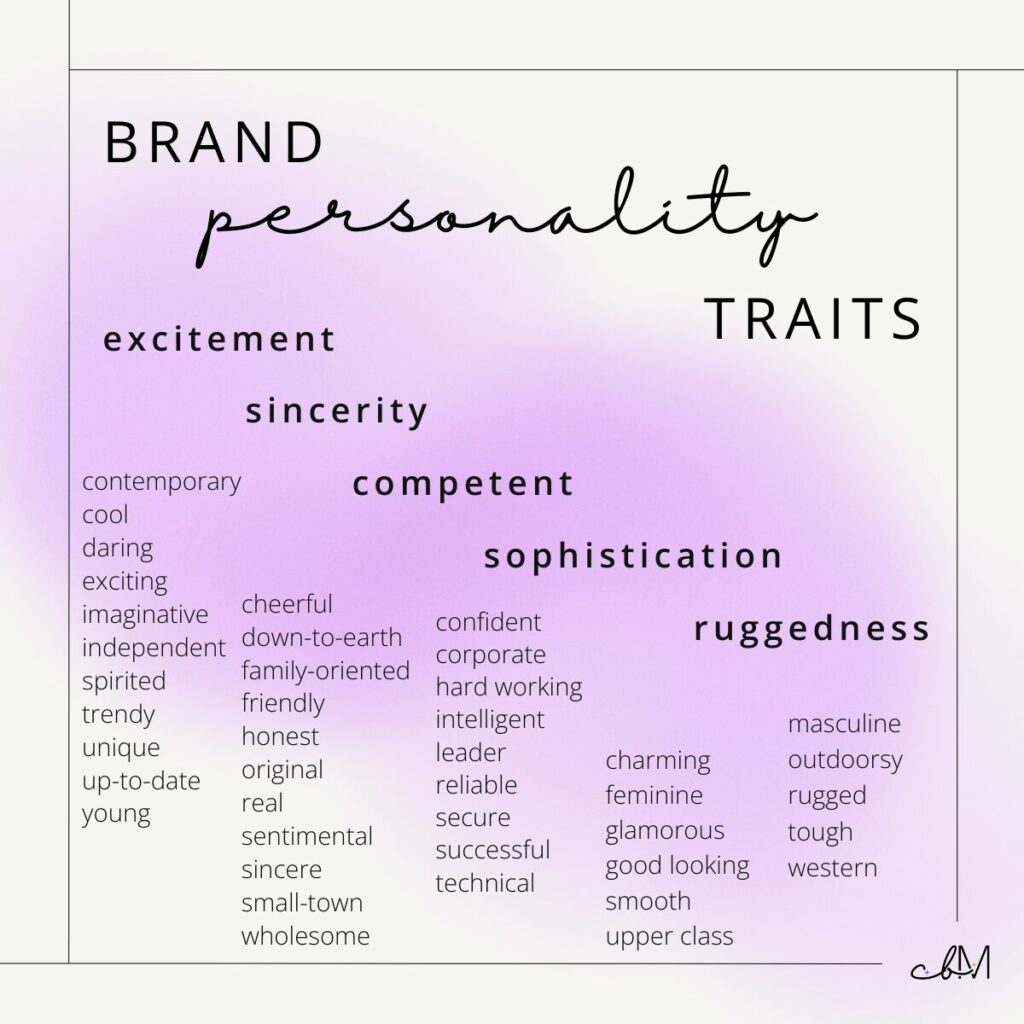
Harness Brand Personality in Life Sciences to Build Trust and Connection
Welcome back to another installment of nerding out on the science of branding, where I deep dive into research and share how you can apply it to your business. Today, we’re discussing brand personality, which is an essential part of branding that goes beyond logos and taglines by resonating deeply with customers and creating lasting emotional connections. Does this seem nebulous to you? You’re not alone. I’ve worked with many clients who are in the same boat. Let’s break down exactly what brand personality is and how to harness its power for your life sciences business.
Research Foundations of Brand Personality
Dimensions of Brand Personality introduced a framework that revolutionized how we perceive brands. The paper defined brand personality as a “set of human characteristics associated with a brand.” Aaker identified five dimensions of brand personality: Sincerity, Excitement, Competence, Sophistication, and Ruggedness. Each dimension mirrors the Big Five human personality traits—openness, conscientiousness, extraversion, agreeableness, and neuroticism—offering a comprehensive model to understand and develop brand personalities.
Interestingly, Aaker noted that some personality facets tap into an innate part of human personality (Sincerity, Excitement, and Competence) whereas others (Sophistication and Ruggedness) tap into a dimension that individuals desire but do not necessarily have. Because of the important nature of work in the life sciences, and the impact that it has on humanity, many brands largely exist in the innate space (Sincerity, Excitement, and Competence).
For instance, a brand might emphasize Competence, showcasing reliability, expertise, and effectiveness. These are critical traits in an industry where trust and precision are paramount. But when considering your brand personality, it could be thought-provoking to explore how Sophistication and Ruggedness play into the desires of your target audience. Can you play off those desires to build loyalty or entice them to take action?
The Predictability → Reliability → Trust Progression
It all comes down to psychology. Humans are inherently driven by emotions and connections. By attributing human traits to a brand identity (aka brand personality), businesses can make their products and services more relatable and approachable to consumers. When customers perceive a brand as having a distinct personality, they are also more likely to form emotional connections, often defending them as they would a close friend. When a brand consistently embodies specific personality traits, it becomes reliable, fosters loyalty, and builds trust.
In the life sciences, where B2B decisions can be complex and stakes high, a brand that communicates trustworthiness and expertise can greatly influence customer preference. Emotional connections, driven by a brand’s consistent and relatable personality, make customers more likely to choose your brand over competitors. While product features, pricing, and customer service are essential, competitors can quickly replicate them. On the other hand, building a trusted brand identity is not so easy to achieve, but can help you carve out a distinct place in the customer’s mind.
How Personality Personifies a Brand
We’re not here to just conduct a thought experiment. Brand personality is actually a very useful tool for implementing the brand on a daily basis. It should seep into interaction and experience. Brand personality manifests through various elements, creating a holistic identity that customers can connect with:
- Visual and Sensory Identity: This includes logos, color schemes, and overall design aesthetics that convey the brand’s personality. For instance, clean, modern visuals can communicate competence and reliability in the life sciences field.
- Verbal Identity, Communication Style, and Tone of Voice: The way a brand communicates—its choice of words, tone, and style—can personify its personality. A brand emphasizing competence might use precise, professional language, while one focusing on excitement might adopt a more dynamic and engaging tone.
- How the Brand Acts: This encompasses the brand’s behavior in the market, including customer service, corporate social responsibility, and community engagement. Actions that consistently reflect the brand’s personality traits reinforce its identity and build stronger customer relationships.
How to Pick Your Brand Personality
We finally made it to the exciting part: choosing your personality traits. It can be helpful to walk through the following steps when selecting your personality traits:
- Define Your Core Values: Understand what your brand stands for. Core values are step one in breathing life into your brand personality, making it more real. Some common values in the life sciences are innovation, precision, and collaboration.
- Know Your Target Audience: Analyze who your customers are and what they value. Tailoring your brand personality to resonate with their preferences and expectations is crucial. When a person feels like a brand understands them, they’re more inclined to trust and engage with it.
- Choose Brand Archetypes: Brand archetypes, such as the Sage or the Explorer, can provide a blueprint for your brand’s personality. Select archetypes that align with your brand’s mission and audience. They can make it easier for consumers to connect with, understand, and remember your brand.
- Pick 3-5 Personality Traits: Based on your core values, target audience, and chosen archetypes, identify a few key personality traits. These traits should consistently inform all aspects of your branding. If you need a place to start, use the 42 personality traits from Aaker’s publication.

Tips to Keep in Mind
- Be Comprehensive, Not Specific: As a tool, give your copywriters and designers as much flexibility and breadth as possible to create visual and verbal manifestations of the brand that are contextually appropriate and effective.
- Consistency is Key: Ensure that every touchpoint, from marketing materials to customer interactions, consistently reflects your brand’s personality.
- Evolve with Your Audience: As customer preferences and industry dynamics evolve, be prepared to adapt your brand personality without losing sight of your core values.
- Go Beyond Standard: Let’s be honest. In the life sciences, everyone is passionate about their mission. That’s table stakes. Instead, think about your why. Strive to create an emotional connection with your audience. Emotional bonds can lead to lasting loyalty and advocacy.
- Monitor and Measure: Regularly assess how your brand personality is perceived and make adjustments as needed to stay aligned with your goals and audience expectations.
By thoughtfully developing and consistently expressing a distinct brand personality, life sciences companies can differentiate themselves, build trust, and foster deep connections with their audience. Whether you aim to project competence, innovation, or compassion, a well-crafted brand personality is your key to standing out in this competitive field.

